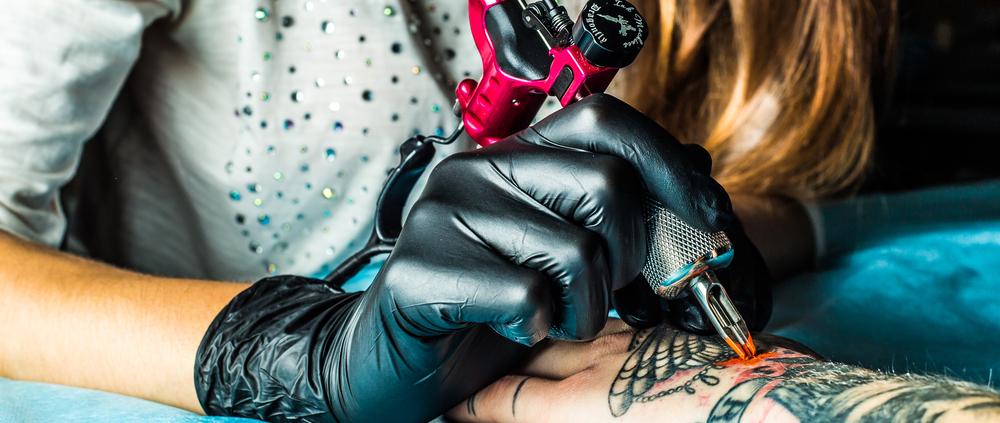Tattoo Allergy: Can You Be Allergic To Tattoo Ink?
After sitting down for hours and getting inked, the last thing you want is to have your skin become irritated, itchy, and blistered. Though it is uncommon, there are some people who have experienced allergic reactions to their new tattoo. Before getting that sleeve you’ve been dreaming about, read up about tattoo allergies and how to figure out your risk.
What is a Tattoo Ink Allergy?
Someone with a tattoo ink allergy will have an allergic reaction to tattoo ink. It’s an unpleasant side effect of body art, one that could cause a mild to severe immune response. A tattoo ink allergy may also trigger an existing skin condition. Having reactions to sun exposure could also cause irritation wherever you are tattooed.
Fortunately, tattoo ink allergies are rare. A small percentage of people will experience an adverse reaction to getting tattooed, but the consequences could be severe. In most cases, the reaction is almost immediate, while others may flare up after 48 hours to a full week after the tattoo is complete. Sometimes, the allergic reaction will occur months later.
Tattoo Allergy Types & Symptoms
Interestingly, many people who are allergic to tattoo ink might confuse their reaction with normal tattoo healing, since the symptoms are very similar.
It’s important to know what signs and symptoms to look out for. That way, you’ll be able to treat the allergic reaction more quickly and prevent any damages to your tattoo.
Signs of a tattoo allergy include:
- Inflamed skin
- Itchiness
- Flaking skin
- Pustules or blisters that ooze and sting or itch
- Skin rash, including contact dermatitis, granulomas (small bumps), and lichenoid allergic reaction (lichen planus).
- Photosensitivity, or an allergic reaction to sun exposure
As soon as you note one or more of these symptoms, take action.
Tattoo Ink Colors That Cause Allergic Reactions
Philadelphia tattoo shops like Oracle Tattoo Gallery use only the highest quality tattoo ink around. Every tattoo we do is a piece of art, and we want the colors to remain vibrant for as long as possible. That said, even high-quality tattoo ink contains ingredients that may cause an allergic reaction. Heavy metal—not the music genre—is often the culprit.
It’s complicated, though. Different colors require different heavy metals, meaning that you could be perfectly fine with one shade while another color gives you a rash.
Here is a breakdown of the heavy metals found in each color of ink:
Red Tattoo Ink
Red pigments are infamous for causing skin reactions. Red tattoo ink allergies often cause dermatitis and lichenoid in people with allergies. This is often due to ingredients and chemicals in the ink, such as ferric (iron) oxide, ferric hydrate (sienna), sandalwood, brazilwood, and mercury sulfide (cinnabar). Some red inks also contain iodine and cadmium, which is a common sensitivity in many people.
Brown tattoo ink also contains ferric oxide.
Since cinnabar contains a toxic ingredient, it has mostly been fazed out from use. Cadmium is still widely used and sometimes causes flaking and itching.
Yellow Tattoo Ink
Yellow ink contains cadmium sulfide and may result in increased photosensitivity. You will want to protect your tattoo from the sun and UV rays.
Blue Tattoo Ink
Often made from minerals, blue ink can cause adverse skin reactions. Ingredients include azurite, cobalt blue, sodium aluminum silicate, and cobalt aluminate.
Black Tattoo Ink
Containing ingredients like logwood, iron oxide, and carbon puts black ink on the radar for potential allergic reactions. Unlike other inks and dyes, the particles in black ink tend to break down over time and cause issues later on in life.
Green, White, and Purple Tattoo Ink
Some inks have less of a chance of causing a reaction, but that doesn’t mean it won’t happen. Though red, yellow, and black trigger immune responses in most people, other colors can influence reactions, too.
Green ink contains ingredients like phthalocyanine dyes, ferrocyanide and ferricyanide, lead chromate, and chromic oxide.
Purple ink uses aluminum and manganese. White contains zinc oxide, lead carbonate, and titanium oxide.
If you are concerned about having an adverse reaction to the inks used in a tattoo, be sure to consult with your friendly neighborhood tattoo artist. They should be able to supply you with a list of ingredients in each ink. Afterward, get in touch with your dermatologist to figure out which chemicals or ingredients put you at a high risk of a reaction.
View this post on Instagram
How to Know You Could Be Allergic
Professional tattoo artists usually ask you to visit the shop before getting tattooed for the first time. Have a patch test done at least 24 hours prior to your appointment. The tattoo artist will put a small amount of ink on bare skin, usually on the ear or somewhere close to where you’ll be tattooed. If there is a reaction within 24 hours, you could have an allergy to the ingredients in the ink.
Another test is the dot test, where a section of skin is tattooed with a single dot of ink. Monitor the skin over the course of 24 hours to see what happens. Any swelling or redness could mean that you are having an allergic reaction.
Getting a Material Safety Data Sheet
Suspect that you could be allergic to tattoo ink? You should check the Material Safety Data Sheet (MSDS) or Safety Data Sheet (SDS). Every MSDS contains information about chemicals commonly found in tattoo inks, including the environmental and physical hazards. These are documents that ink manufacturers are legally required to produce whenever they use a chemical compound. Should any chemical be connected to known health hazards, the information will be found in the MSDS.
Treating Your Tattoo Allergy
Experiencing itching, flaking, and swelling around the area of your tattoo? You could be having an allergic reaction. If the symptoms are mild, you can take an over-the-counter medication. Antihistamines are the best. Topical ointments, such as hydrocortisone, can also soothe the irritation.
If the reaction is worse than mild, call the dermatologist or your primary care physician. You may need stronger medication for the reaction. Infections will require antibiotics.
Can Getting a Tattoo Removed Help With Tattoo Ink Allergies?
Removal generally isn’t necessary. With the right amount of care, the allergic reaction will fade within a few days. No scars or marks will remain in that case.
In more severe cases, allergic reactions or infections that are left untreated could potentially destroy the tattoo. After the reaction has ended, your tattoo artist may be able to touch up the tattoo to hide any blemishes. But if your skin is unable to tolerate the ink or any additions, laser tattoo removal could be an option. Creams may work to fade the tattoo, but the particles that cause the allergic reaction will remain.
Final Thoughts on Tattoo Allergies
Allergies suck. Having to get your tattoo removed because you were allergic to the ink sucks even more. Be safe when choosing the colors of your tattoo. Get a patch or a dot test, and talk to your tattoo artist about the possibility of having a reaction. And if you do find out you’re allergic, don’t worry. There are organic inks, specialized blends, and other alternatives out there!
Oracle Tattoo Gallery is your go-to in the Philadelphia area. If you’re looking to get some fresh ink or have an idea in your head, let us know. Drop us a line by filling out the contact form or call us at 215-638-1601.


